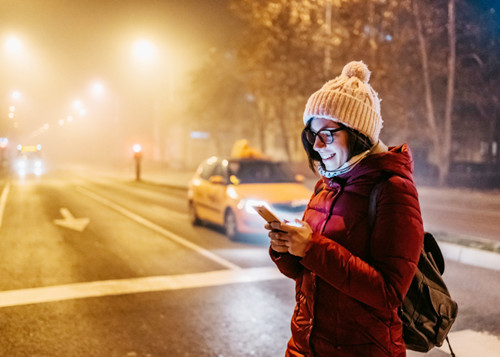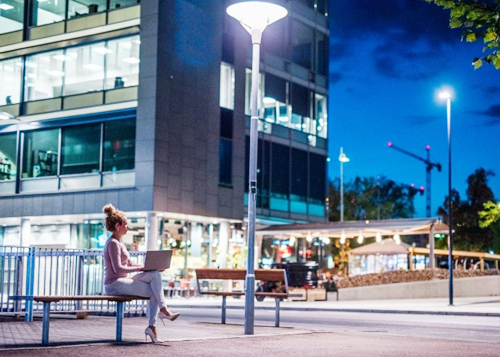With the continuous consumption of energy and the increasing scarcity of resources, the harm of the greenhouse effect to humanity is becoming increasingly significant, and atmospheric pollution is posing a growing threat to the Earth. There is a growing international call for energy conservation and reduction of consumption, and today, saving energy has become a top priority for countries around the world. As early as 1996, China officially launched the Green Lighting Project, proposing that lighting projects should save resources, prevent pollution, and benefit future generations. Over the years, through the joint efforts of various sectors, the fourth-generation semiconductor (LED) lighting products have made remarkable progress, achieving significant achievements in energy conservation.
So, You can see street lamps standing tall on both sides of the road everywhere, bringing brightness to the night and providing warmth to those returning home late. They collectively form a beam of light that illuminates the way home, making lonely walkers in the city no longer feel lonely at night. In this issue, let's talk about the product "street lamps" together.

LED streetlights refer to lighting fixtures that provide illumination for roads, generally encompassing fixtures within the scope of road surface illumination in traffic lighting. They are commonly installed on one or both sides of the road. The typical components of street lights include fixtures, light sources, lamp posts, lamp arms, flanges, and embedded foundations.
The most common municipal streetlights consist of several components: fixtures, light sources, lamp arms, lamp posts, and flanges. In contemporary times, energy-efficient municipal street lights have emerged, which also include solar panels, lithium batteries, and controllers. Additionally, there are wind-solar hybrid street lights, which comprise wind turbines, solar panels (with brackets), controllers, batteries, light sources, and lamp posts.
LED streetlights can be classified based on various criteria:
① According to the height of the lamp post: high-pole street lights, medium-pole street lights, roadway lights, courtyard lights.
Based on the material of the lamp post: iron street lights, stainless steel street lights, aluminum alloy street lights.
② By design style: landscape lights, single-arm, double-arm street lights, courtyard lights, medium-high-pole lights, traditional Chinese lights, and more.
③ According to the power supply method: mains-powered street lights, solar street lights, wind-solar hybrid street lights.
Street Light Structure
Here, let's learn about the most common municipal street lights. Municipal street lights typically consist of fixtures, light sources, lamp arms, lamp posts, and flanges. Currently, there are also energy-efficient municipal street lights, which include solar panels, lithium batteries, and controllers. Additionally, there are wind-solar hybrid street lights, which are composed of wind turbines, solar panels (including brackets), controllers, batteries, light sources, and lamp posts.

① The performance indicators of light sources and fixtures should meet the energy-saving evaluation value requirements specified in the current national energy efficiency standards.
② Since street lights are exposed to the outdoors for extended periods, their protection level should generally not be lower than IP54.
③ For roads, expressways, and main roads with no buildings around, cut-off luminaires must be used to ensure high road height, good uniformity, and minimal glare. For general urban roads, secondary roads, or roads with nearby buildings, semi-cut-off luminaires must be used. For side roads or well-lit areas, non-cut-off luminaires should be used.
Cut-off luminaires are defined as fixtures with a maximum light intensity direction angle between 0° and 65° relative to the vertical axis below the luminaire. The maximum allowable light intensity values in the 90° and 80° directions are 10cd/1000lm and 100cd/1000lm, respectively. Regardless of the light source luminous flux, the maximum light intensity value in the 90° direction should not exceed 1000cd.
Semi-cut-off luminaires are defined as fixtures with a maximum light intensity direction angle between 0° and 75° relative to the vertical axis below the luminaire. The maximum allowable light intensity values in the 90° and 80° directions are 50cd/1000lm and 100cd/1000lm, respectively. Regardless of the light source luminous flux, the maximum light intensity value in the 90° direction should not exceed 1000cd.
Non-cut-off luminaires have no restrictions on the maximum light intensity direction, with the maximum light intensity value in the 90° direction not exceeding 1000cd.
④ When selecting fixtures, under the premise of meeting relevant standards for fixtures and the requirements for light distribution and glare control, conventional road lighting fixtures should have an efficiency of no less than 70%, and floodlights should have an efficiency of no less than 65%.
⑤ The power factor of gas discharge lamp circuits should not be less than 0.85.
⑥ Except for residential areas and a few roads with special requirements, measures should be taken to reduce road surface brightness (luminance) in the late night, such as using dual-source luminaires and closing one light source in the late night or using devices that can automatically reduce light source power in the late night. More than half of the luminaires may be turned off, but two adjacent luminaires along the longitudinal direction of the road should not be turned off.
⑦ Reasonable control methods should be selected, and control equipment with high reliability and good consistency should be used.
⑧ A maintenance plan should be developed, including regular cleaning of fixtures, replacement of light sources, and maintenance of other facilities.
A solar LED street light system consists of several components, including:
(1) Solar Panels:
The solar panel is the core component of a solar street light system. It converts solar energy into electricity, which is then stored in batteries through a controller. Solar panels are typically made of monocrystalline or polycrystalline silicon.
(2) Solar Controller:
The controller is a crucial accessory in the street light system. It connects the solar panel, battery, and LED light fixture. The controller plays a vital role in controlling the output power load, charge and discharge cycles, and protection functions against overcharging and over-discharging, ensuring the proper operation of the system.
(3) Battery:
Batteries are valuable components in a solar system. They store electrical energy generated during the day from the solar panels and supply power to the LED street light during the night, all under the control of the controller.
(4) LED Street Light Fixture:
LED light fixtures are commonly used in solar street lights. Choosing the right fixture is essential to ensure effective lighting performance.
(5) Lamp Post:
Selecting an appropriate lamp post height is crucial, depending on road width and spacing. The height of the lamp post determines the illuminance of the street light. Careful consideration should be given to the height selection, such as the height of a single-sided street light being equal to or greater than the road width, the height of symmetrical double-sided street lights being half the road width, and the height of zigzag double-sided street lights being at least 70% of the road width. This ensures optimal lighting performance.
In some cases, an inverter may also be included in the system to convert DC power from the battery to AC power for specific applications or when AC power is needed.

As we approach the Mid-Autumn Festival of 2023, we want to express our heartfelt gratitude for clients’ unwavering support as we strive to illuminate the world with sustainable solar energy solutions.
As a leading solar street light manufacturer based in China, we are proud to share our recent achievements with you. Before the Mid-Autumn Festival this year, we successfully produced and distributed 68 sea cabinets of high-quality solar outdoor lighting products to customers all around the globe. Clients trust in our products has enabled us to brighten communities and streets in various corners of the world, contributing to a greener and more sustainable future.
However, we are not content with merely reaching this milestone. Our vision for the future is even more ambitious, and we are determined to go above and beyond to meet your expectations. In the second half of this year, our goal is to exceed 168 sea cabinet sales, further expanding our impact and reach.
Uncompromising Quality: Our commitment to excellence starts with the highest standards of product quality. Each solar street light system we produce undergoes rigorous quality control to ensure reliability and longevity.
Cutting-Edge Technology: We stay at the forefront of solar energy technology, continually innovating to provide you with the most efficient and sustainable lighting solutions.
Global Reach: Our products have reached customers across the world, illuminating urban streets, rural communities, and remote areas with limited access to conventional power sources.
Environmental Responsibility: We are dedicated to reducing carbon footprints and fighting climate change through the widespread adoption of solar energy.
Customer-Centric Approach: Your satisfaction is our top priority. We are always ready to listen to your needs, answer your questions, and provide the best solutions tailored to your requirements.
We believe in the power of solar energy to transform lives and communities. By choosing our solar street lights, you are not only investing in a reliable and sustainable lighting solution but also contributing to a brighter and more sustainable future for our planet.
Contact: Mr. Otis
Phone: +8615815758133
Tel: +8615815758133
Email: Hello@lederlighting.com
Add: No. 1 Gaoxin West Road,High-tech Zone, Jiangmen, Guangdong, China